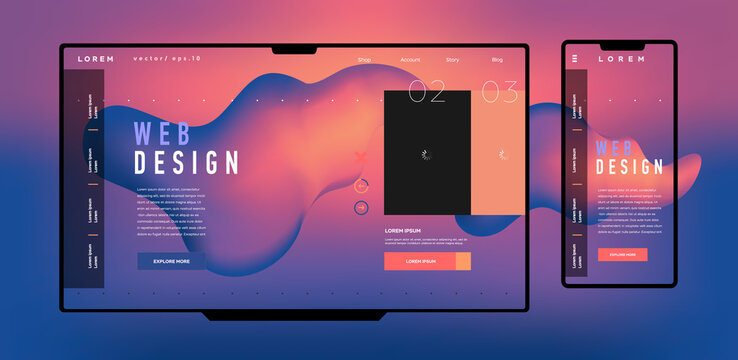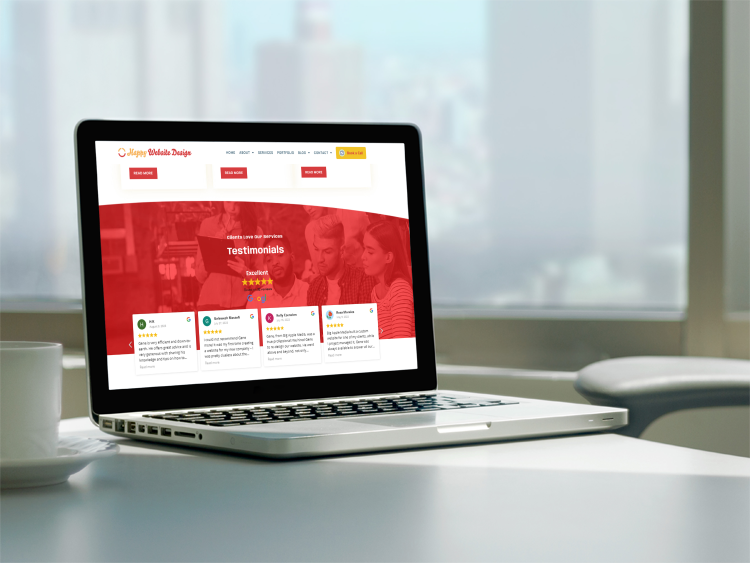Why Holistic Internet Design Is the Key to a Smooth User Experience
In today's digital landscape, the importance of alternative internet design can not be overstated, as it elaborately weaves with each other aesthetics, usability, and performance to produce a smooth customer experience. By embracing a detailed strategy that prioritizes user needs and leverages comments, designers can improve the total communication with their systems.
Recognizing Holistic Web Design

Including individual feedback and behavior data is essential in holistic website design. This iterative procedure helps developers to determine discomfort factors and areas for improvement, making sure that the end product reverberates with individuals. Holistic style emphasizes the value of accessibility, making sure that all users, no matter of their abilities, can navigate and connect with the site successfully.
Additionally, the combination of receptive design principles is crucial in fitting numerous devices and screen dimensions, further improving the customer experience. By understanding the interconnectedness of these components, developers can develop websites that not only draw in yet also maintain customers, ultimately driving engagement and conversions. Alternative website design is, therefore, a calculated strategy that cultivates a meaningful connection between individuals and electronic rooms, leading the way for sustainable on the internet success.
Crucial Element of Holistic Style

One more crucial element is uniformity in aesthetic and functional aspects throughout the web site. This includes preserving a natural shade combination, typography, and design, which aids users browse the site with ease - happy web design. Additionally, responsive layout is vital, making sure that the web site carries out efficiently throughout numerous devices and screen sizes
Accessibility is also an essential element of holistic design. By adhering to access requirements, designers can develop inclusive experiences that satisfy varied individual teams, including those with disabilities. The assimilation of material approach guarantees that beneficial information is offered clearly and succinctly, improving understanding and engagement.
Finally, reliable collaboration amongst layout, development, and advertising teams promotes a unified vision that aligns with company purposes. By concentrating on these crucial elements, holistic website design can supply an enriching individual experience that is both interesting and useful.
Benefits of a Seamless Experience
Producing a smooth customer experience offers various advantages that dramatically enhance overall fulfillment and involvement. At its core, a smooth experience fosters a feeling of simplicity and intuition, permitting users to navigate a site or application effortlessly. This reduction in friction not only boosts the chance of individuals returning but also enhances their desire to suggest the platform to others.
Furthermore, a seamless experience brings about boosted conversion rates. When users discover what they require with very little initiative, they are a lot more likely to finish preferred activities, such as buying or registering for an e-newsletter. This effectiveness equates into higher customer retention, as satisfied users are most likely to become dedicated supporters for the brand name.
Furthermore, a cohesive and seamless interface minimizes cognitive lots, permitting individuals to focus on content rather than battling with navigating or style variances. This clearness not only boosts customer fulfillment however also reinforces brand name integrity. Eventually, prioritizing a smooth individual experience results in an affordable benefit, as organizations that invest in this facet are much better positioned to meet the advancing expectations of their audience and drive lasting success.
Executing Holistic Approaches
To attain an absolutely smooth individual experience, organizations have to embrace holistic approaches that think about every facet of style and functionality. This strategy begins with a linked vision that lines up employee throughout different disciplines, consisting of UX/UI design, material development, and technological implementation. Efficient collaboration promotes a common understanding of individual needs and goals, permitting more systematic design selections.
Next, it is vital to create individual personas and journey maps that show the varied demographics and behaviors of the target audience. By feeling sorry for users' viewpoints, companies can expect difficulties and enhance interactions throughout the electronic experience.

Additionally, regular branding and messaging should web design consulting services permeate every touchpoint, making sure a recognizable and credible existence that boosts user engagement. Integrating receptive layout principles is additionally essential, as users now engage with web content throughout multiple devices.
Additionally, companies must focus on accessibility, ensuring that all users, despite capability, can browse and profit from their electronic offerings. By installing these all natural approaches right into the layout procedure, companies can develop a natural and enjoyable user experience that promotes satisfaction and loyalty.
Measuring User Experience Success
While achieving a holistic approach to website design is important, measuring user experience success is equally important to ensure that layout approaches properly fulfill customer requirements. This needs a combination of qualitative and quantitative metrics to obtain a thorough understanding of customer communications and fulfillment levels.
Key efficiency signs (KPIs) such as individual engagement, conversion prices, and bounce prices supply important quantitative understandings. A high conversion rate may show that individuals find the layout instinctive and compelling. Conversely, raised bounce rates can signify that customers are discontented or baffled, necessitating a reevaluation of the layout aspects.
Qualitative measures, consisting of user responses, studies, and usability screening, are critical for getting deeper insights into the individual experience. Examining individual remarks can disclose pain points and locations for enhancement, while usability examinations permit designers to observe real-time communications and determine barriers individuals encounter.
Eventually, the assimilation of these measurement strategies enables for continual refinement of website design, guaranteeing it remains user-centered and efficient in delivering a seamless experience (happy web design). Routinely taking another look at these metrics will allow developers to adapt to progressing user requirements and choices, solidifying the general success of an all natural web style strategy
Final Thought
In conclusion, holistic web design emerges as a fundamental approach to achieving a seamless user experience. By integrating visual appeals, performance, and usability, this design viewpoint addresses diverse user needs and preferences.